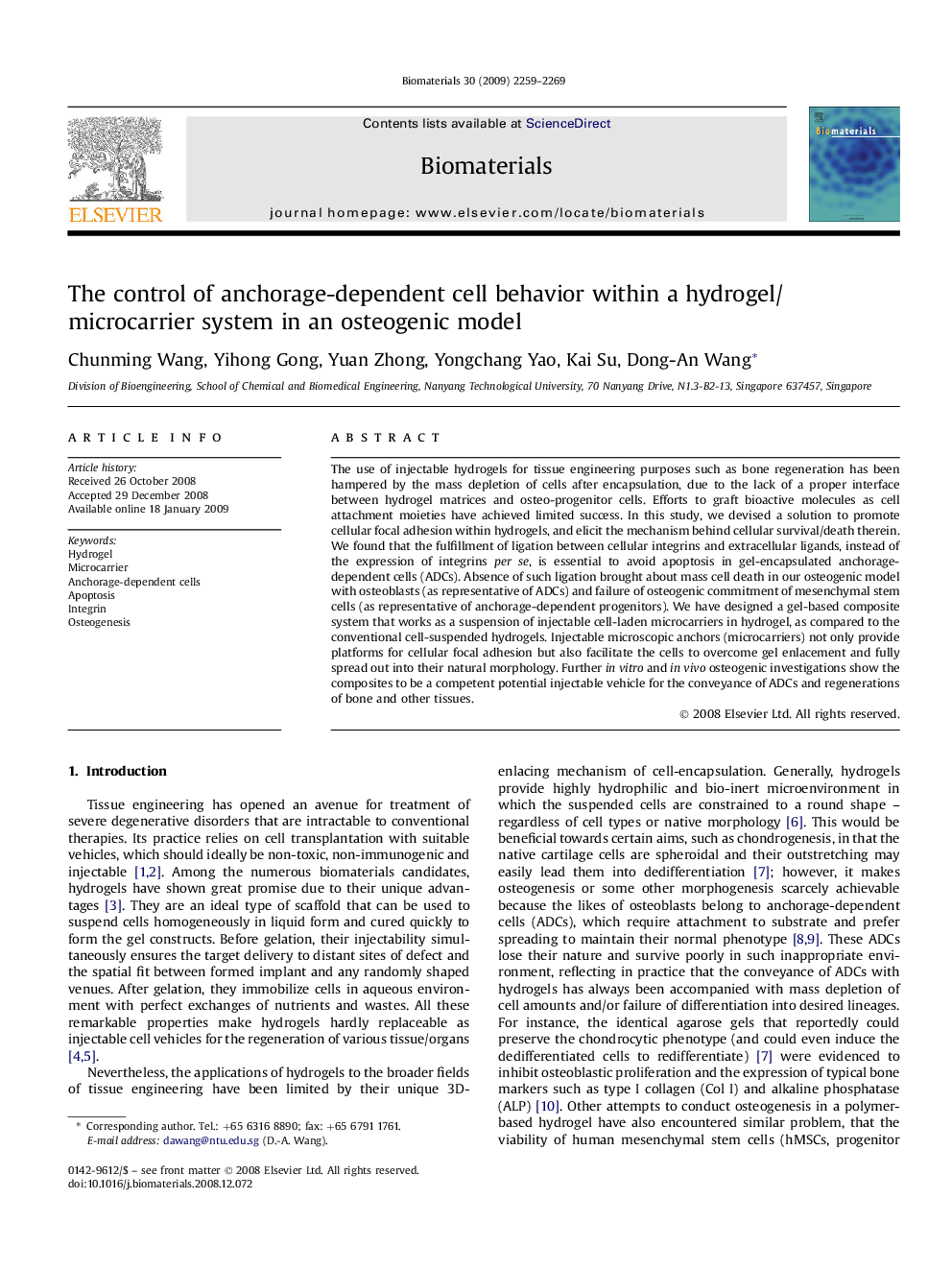| Article ID | Journal | Published Year | Pages | File Type |
|---|---|---|---|---|
| 10510 | Biomaterials | 2009 | 11 Pages |
The use of injectable hydrogels for tissue engineering purposes such as bone regeneration has been hampered by the mass depletion of cells after encapsulation, due to the lack of a proper interface between hydrogel matrices and osteo-progenitor cells. Efforts to graft bioactive molecules as cell attachment moieties have achieved limited success. In this study, we devised a solution to promote cellular focal adhesion within hydrogels, and elicit the mechanism behind cellular survival/death therein. We found that the fulfillment of ligation between cellular integrins and extracellular ligands, instead of the expression of integrins per se, is essential to avoid apoptosis in gel-encapsulated anchorage-dependent cells (ADCs). Absence of such ligation brought about mass cell death in our osteogenic model with osteoblasts (as representative of ADCs) and failure of osteogenic commitment of mesenchymal stem cells (as representative of anchorage-dependent progenitors). We have designed a gel-based composite system that works as a suspension of injectable cell-laden microcarriers in hydrogel, as compared to the conventional cell-suspended hydrogels. Injectable microscopic anchors (microcarriers) not only provide platforms for cellular focal adhesion but also facilitate the cells to overcome gel enlacement and fully spread out into their natural morphology. Further in vitro and in vivo osteogenic investigations show the composites to be a competent potential injectable vehicle for the conveyance of ADCs and regenerations of bone and other tissues.
